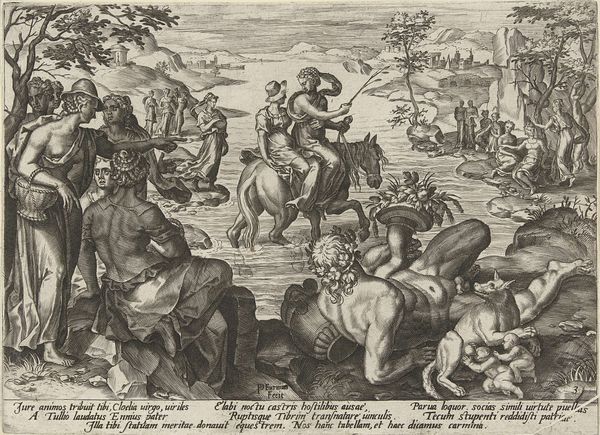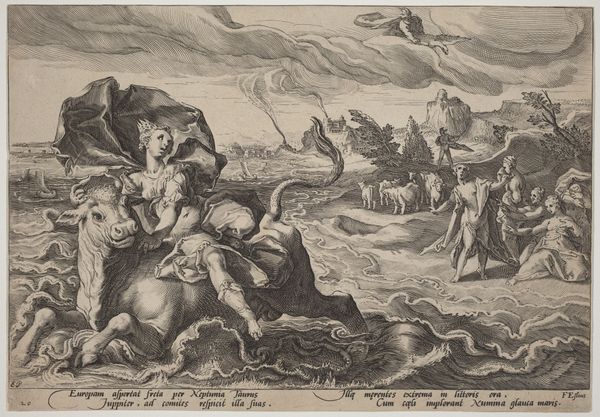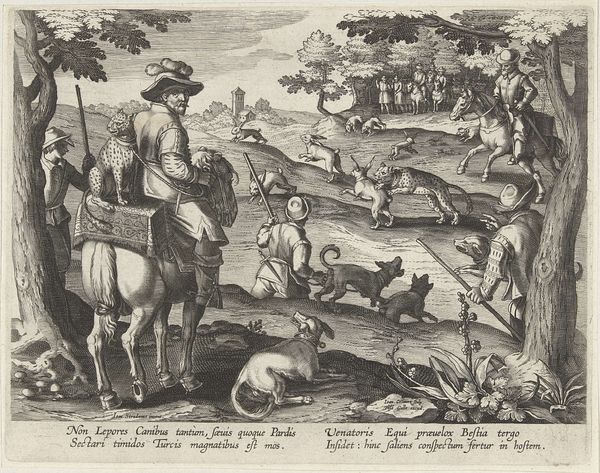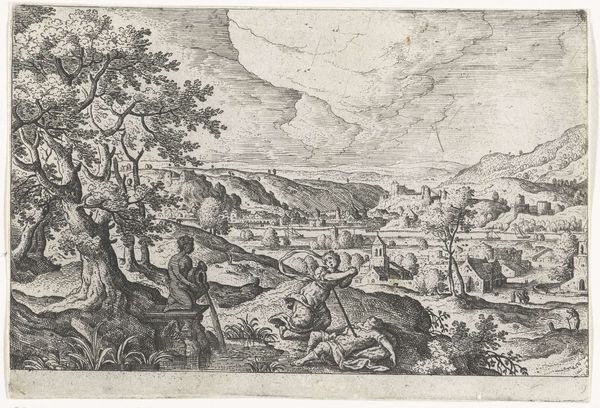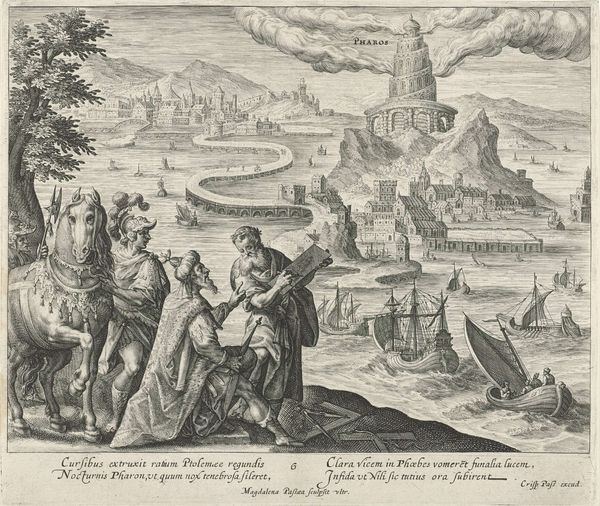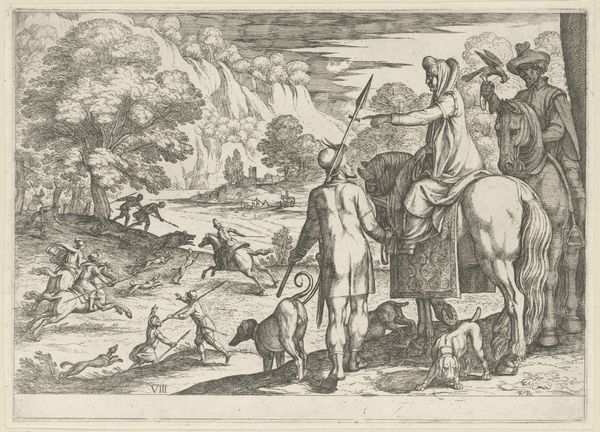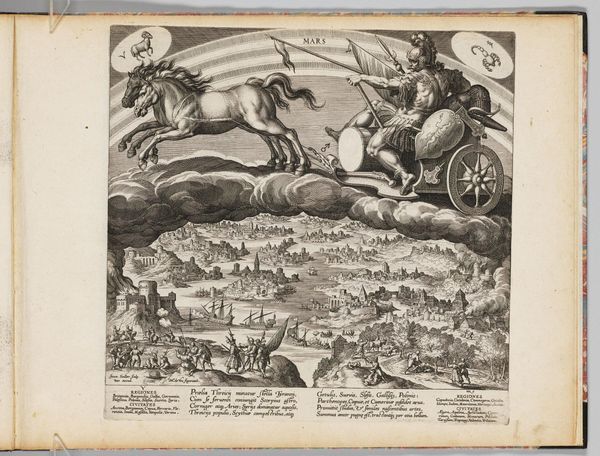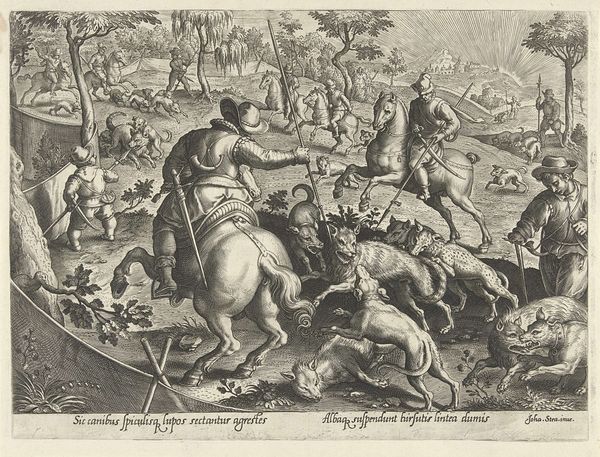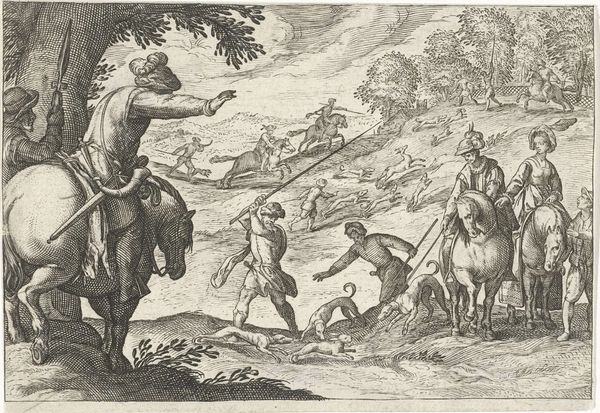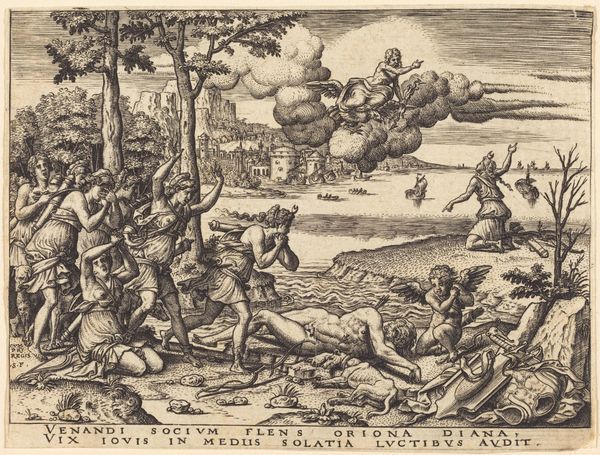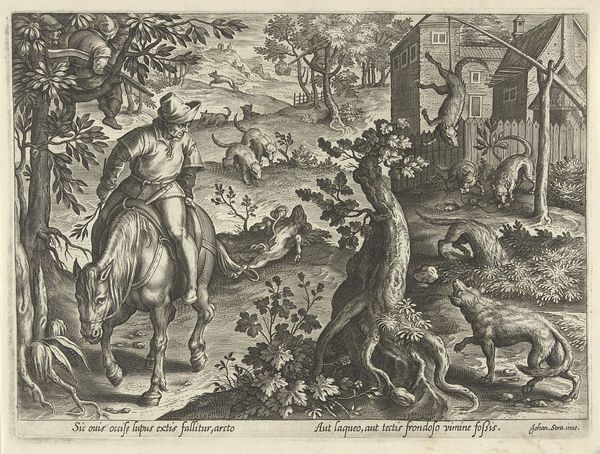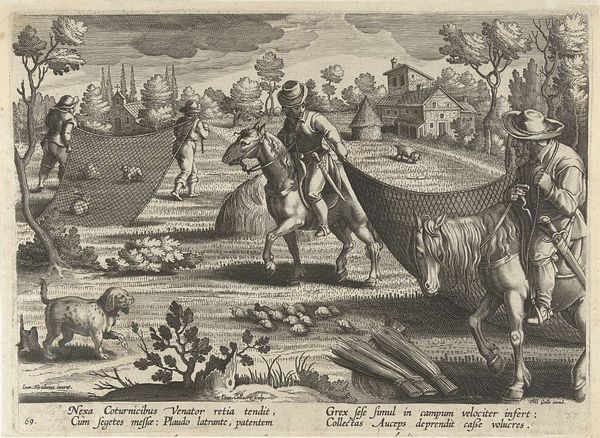
print, engraving
# print
#
old engraving style
#
landscape
#
genre-painting
#
history-painting
#
engraving
Dimensions: height 198 mm, width 267 mm
Copyright: Rijks Museum: Open Domain
Editor: So this engraving, "Jacht op kamelen," or "Camel Hunt" made between 1594 and 1598 by Jan Collaert II. The stark contrast and linear detail create quite a dramatic scene, what strikes me most is how active everything feels, and also the way the 'new world' is being imagined here. What can you tell me about it? Curator: Looking at the material realities of this engraving is key. This image wasn't just plucked from thin air, its creation involved specific materials – the copper plate, the engraver's tools, the ink, and paper. Consider the labour involved in each step of production and reproduction; Collaert was likely one of many working on a project that would have multiple authors over time and space. How does knowing it's a print, meant for wider circulation, change your perception? Editor: That's a good point! It feels like understanding how this image was crafted and then distributed allows for a wider awareness and engagement with how those historical people viewed their reality. This wasn't necessarily ‘high art’ back then? Curator: Precisely. Think of the print as a commodity. It reflects, reinforces, and potentially reshapes societal views on colonial ventures. Look at the depiction of the camels and the hunting party. The act of depicting that reflects economic and colonial interests during the era of exploration. Notice, too, the contrast between the detailed foreground and the less defined background. Does that suggest anything about the artist’s priorities, perhaps even the target audience? Editor: I hadn't considered it that deeply, viewing it as an object and seeing the different choices behind the medium and circulation completely changes how I look at this engraving! Curator: Indeed. It makes us reconsider the social contexts that give birth to art production. We begin to move away from traditional readings of “taste” and explore labor, materiality, and consumption during the late 16th century.
Comments
No comments
Be the first to comment and join the conversation on the ultimate creative platform.
